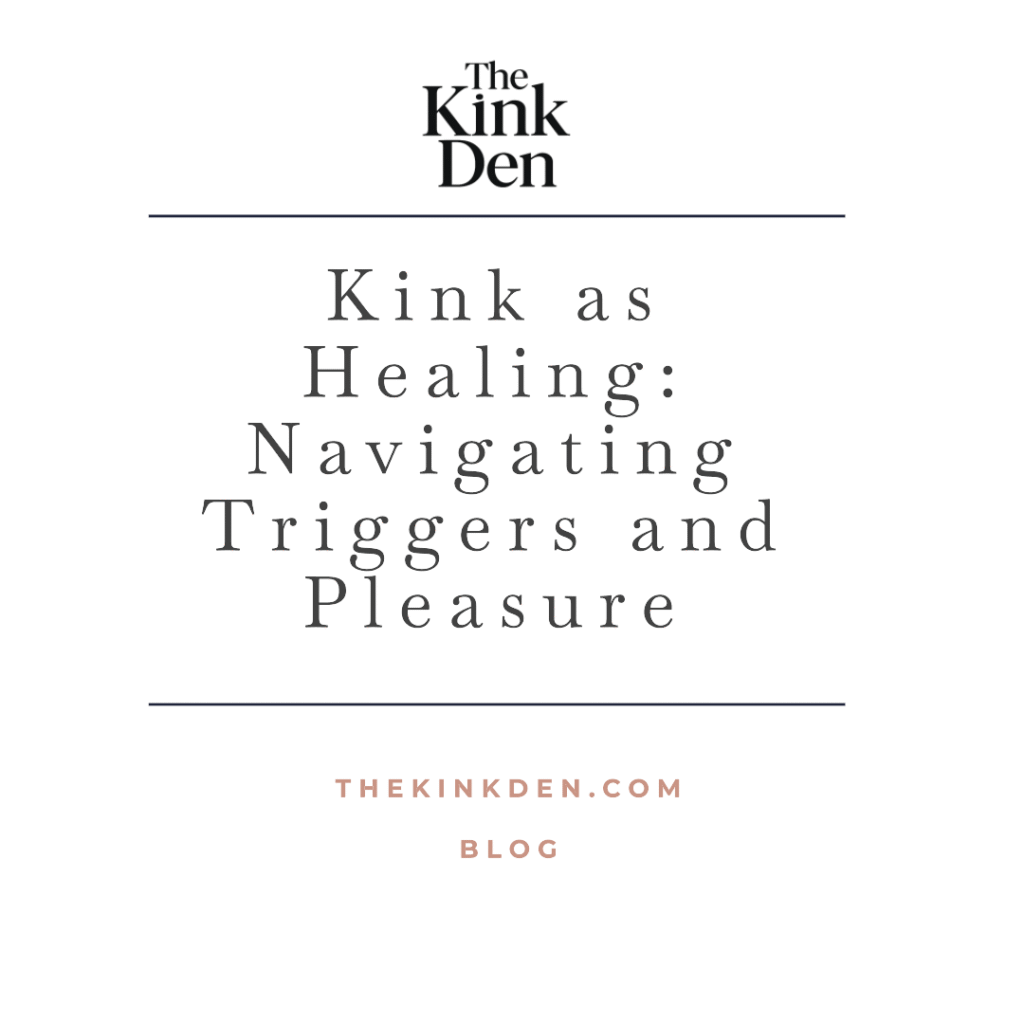Content note: This post discusses trauma, emotional triggers, and healing through kink. Please proceed gently and take breaks if you need to.
Why Some People Find Healing in Kink
For many, kink is about pleasure, power, sensation, and erotic freedom. For others, it can become a tool for reconnecting with the body, reclaiming power, and exploring emotional wounds within safe, consensual dynamics.
Whether you identify as a submissive, Dominant, switch, brat, or something entirely your own, your desires can hold meaning. Exploring them consciously may open emotional doors that bring release, clarity, or even healing.
Understanding Triggers in a Kink Context
A trigger is an involuntary emotional or physiological response to something that reminds your nervous system of past harm. Kink, especially when it plays with themes of power or restraint, can bring those responses up unexpectedly.
That doesn’t mean kink is unsafe. It means we need strong containers like clear communication, trust, and aftercare, to navigate intensity with care.
Activation Versus Re-Traumatization
There’s a difference between being emotionally activated and being re-traumatized. Activation can be intentional, held, and even healing. Re-traumatization feels like being trapped or losing control. The goal in healing-oriented kink is to create space for activation that feels chosen and supported.
Safe words, emotional check-ins, and mutual aftercare all serve as anchors when scenes touch on emotionally charged areas.
When Old Wounds Surface in Play
You might notice that certain kinks echo past dynamics—control, helplessness, humiliation, pain. That doesn’t make your desire wrong. It means you are human and complex. Some people find that consensually playing with these themes helps them rewrite their inner narrative.
Dr. Jessica Fern, author of Polysecure, writes: “When people have access to enough emotional safety, they may use intentional kink dynamics to bring old attachment patterns into the light. That kind of play is not about getting stuck in the past, but about being seen and held differently this time.”
Grounding Practices and Emotional Safety
If you’re using kink as part of an emotional or therapeutic journey, structure matters. Here are some grounding practices to support that:
- Have an emotional pre-scene check-in
- Establish safewords for emotional overwhelm, not just physical limits
- Include “emotional red lines” in your negotiation
- Plan for extended aftercare and space to decompress
- Be honest if something felt off, even days later
These tools can help you stay connected to your body and your partner when the play gets deep or emotionally charged.
Examples of Healing-Oriented Kink
Some people use kink dynamics as a conscious way to work through past trauma or emotional pain. Examples include:
- Service dynamics that help rebuild self-trust and worth
- Degradation play with scripted affirmations afterward
- Consensual non-consent scenes negotiated in detail, followed by intense care
- Spanking or impact play as a form of catharsis and release
Each of these examples requires clarity, emotional readiness, and a partner who deeply respects your boundaries and your process.
Know Your Limits and Tend to Your Needs
You never need to turn your pain into a scene. You never have to explain why something is off-limits. Healing through kink is one option, not a requirement. Your limits are sacred. Consent means you can say yes, no, or not now—and have that respected without question.
If you feel overwhelmed by strong emotions after a scene, that doesn’t mean you did something wrong. It means your body and brain are integrating. Allow space for feelings. Use aftercare. Speak gently with yourself.
Want Support on Your Kink Journey?
If you’re curious about how to explore kink safely, download our Free BDSM Beginner Guide when you sign up to the newsletter. It includes tools for negotiation, consent, and aftercare that meet you where you are.
You can also explore Polysecure by Dr. Jessica Fern if you want to dive deeper into attachment, consent, and emotional resilience.
Healing doesn’t always happen in therapy rooms. Sometimes it happens in rope, in roleplay, in the moment someone says, “I see you. I’ve got you. You are safe here.”




